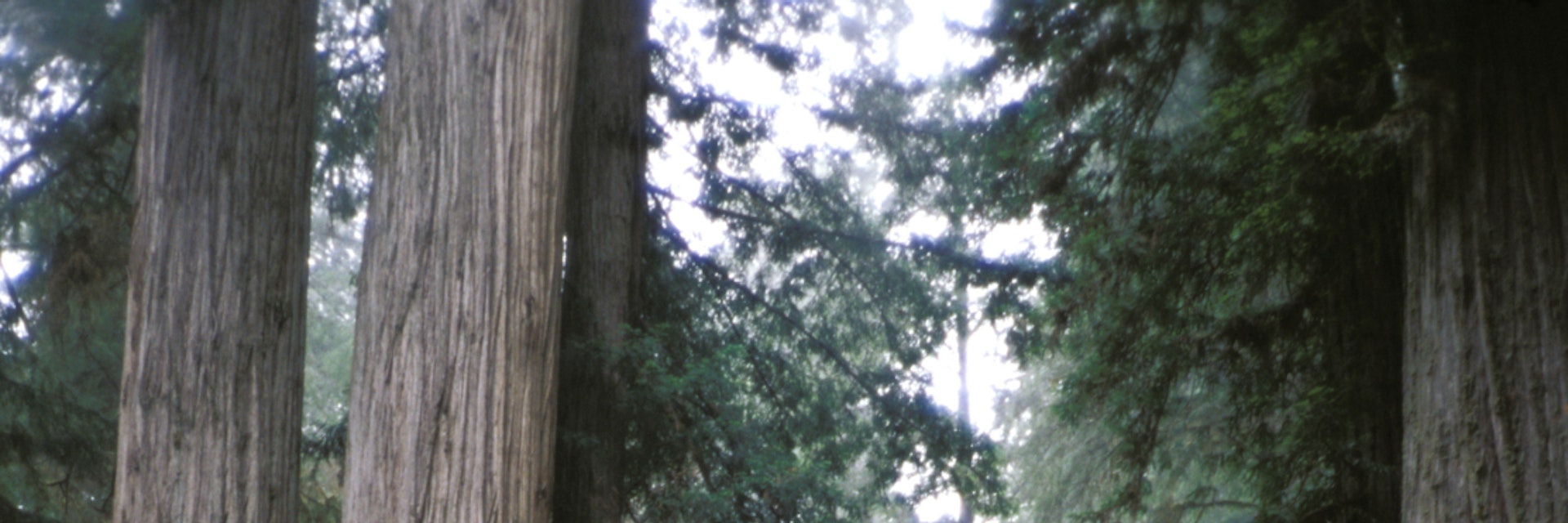The northernmost park, Jedediah Smith is 9 miles northeast of Crescent City (via Hwy 101 north to Hwy 199 east). The redwood stands are so thick that few trails penetrate the park, but the outstanding 11-mile Howland Hill Rd scenic drive cuts through otherwise inaccessible areas (take Hwy 199 to South Fork Rd; turn right after crossing two bridges). It’s a rough gravel road and not recommended for RVs, but if you can’t hike, it’s the best way to see the forest.
Stop for a stroll under enormous trees in Simpson-Reed Grove. If it’s foggy at the coast, it may be sunny here. There’s a swimming hole and a picnic area near the park entrance. An easy half-mile trail, departing from the far side of the campground, crosses the Smith River via a summer-only footbridge, leading to Stout Grove, the park’s most famous grove. The visitor center sells hiking maps and nature guides. If you wade in the river, be careful in the spring when currents are swift and the water cold.
West of Jedediah Smith Redwoods, the Smith River, the state’s largest undammed waterway, flows right beside Hwy 199. Originating high in the Siskiyou Mountains, its serpentine course cuts through deep canyons beneath thick forests. Chinook salmon (October to December) and steelhead trout (December to April) annually migrate up its clear waters. Camp (there are 86 campsites and four rental cabins), hike (20 miles of trails), raft (145 miles of navigable white water) and kayak here, but check regulations if you want to fish. Stop by the Hiouchi Information Center to get your bearings and pick up a pamphlet for the Myrtle Creek Botanical Area where you can see rare plants and learn about the area’s geology.
Note that there are bear lockups by the campgrounds here.





